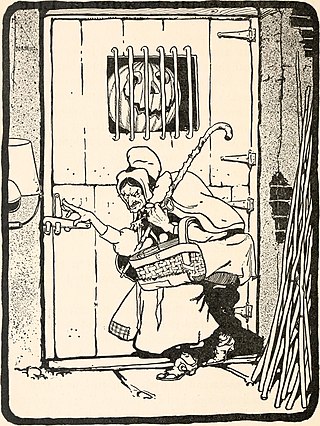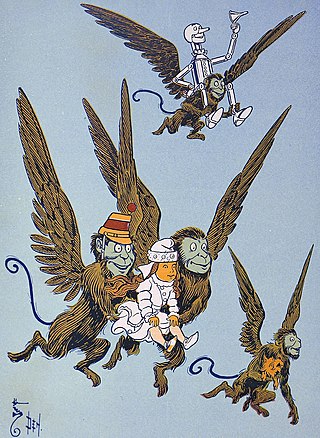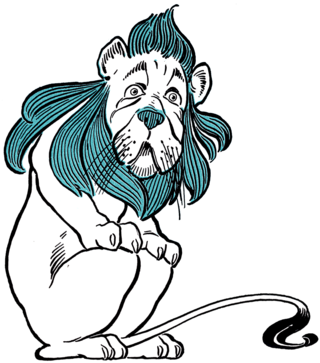This article needs additional citations for verification .(March 2019) |

A witch hat is a style of hat worn by witches in popular culture depictions, characterized by a conical crown and a wide brim.
This article needs additional citations for verification .(March 2019) |

A witch hat is a style of hat worn by witches in popular culture depictions, characterized by a conical crown and a wide brim.

The origins of the witch hat as displayed today are disputed.
One theory is that the image arose out of antisemitism: in 1215, the Fourth Council of the Lateran issued an edict that all Jews must wear identifying headgear, a pointed cap known as a Judenhut . Potentially, this style of hat then became associated with black magic, Satan-worship and other acts of which the Jews were accused. [1]
Another theory posits that the witch hat has origins in the phrygian cap which is associated with Mithraism, a Greek and then Roman mystery cult.[ citation needed ]
An earlier theory is the mummified remains of the "witches" of Subeshi, who wore very tall, pointed black hats that resembled the iconic headgear of their sisters in medieval Europe. Subeshi, dated to between the 4th and 2nd centuries BCE, is located in a high gorge just to the east of the important city of Turfan.[ citation needed ]
A similar theory posits that the image of the archetypal witch hat was born from anti-Quaker prejudice. Although the hats traditionally worn by Quakers themselves were not pointed, Quaker caps were a focus of cultural controversy, and it is conceivable that the Puritan backlash against Quakers in the mid-18th century contributed to hats becoming part of the iconography of the demonic. [1]
Yet another hypothesis proposes that witch hats originated as alewife hats, distinctive headgear worn by women who home-brewed beer for sale. According to this suggestion, these hats gained negative connotations when the brewing industry, dominated by men, accused alewives of selling diluted or tainted beer. In combination with the general suspicion that women with knowledge of herbology were working in an occult domain, the alewife hat could have become associated with witchcraft. [2]
L. Frank Baum's 1900 novel The Wonderful Wizard of Oz featured illustrations that portrayed the Wicked Witch of the West sporting a tall, conical hat. [3] This fashion accessory was carried over for the 1939 film adaptation, in which the Wicked Witch was played by character actress Margaret Hamilton.
Witch hats have been worn by a number of fictional characters, including:
Depending upon the material in which the hat is made, the crown may regularly be observed in a flexed, bent or crumpled condition.

The Wonderful Wizard of Oz is a 1900 children's novel written by author L. Frank Baum and illustrated by W. W. Denslow. It is the first novel in the Oz series of books. A Kansas farm girl named Dorothy ends up in the magical Land of Oz after she and her pet dog Toto are swept away from their home by a cyclone. Upon her arrival in the magical world of Oz, she learns she cannot return home until she has destroyed the Wicked Witch of the West.

The ruby slippers are a pair of shoes worn by Dorothy Gale as played by Judy Garland in the 1939 Metro-Goldwyn-Mayer musical film The Wizard of Oz. Because of their iconic stature, they are among the most valuable items of film memorabilia. Several pairs were made for the film, though the exact number is unknown. Five pairs are known to have survived; one pair was stolen from a museum in 2005 and recovered in 2018.

The Phrygian cap or liberty cap is a soft conical cap with the apex bent over, associated in antiquity with several peoples in Eastern Europe and Anatolia, including the Persians, the Medes and the Scythians, as well as in the Balkans, Dacia, Thrace and in Phrygia, where the name originated. The oldest depiction of the Phrygian cap is from Persepolis in Iran.
A knit cap is a piece of knitted headwear designed to provide warmth in cold weather. It usually has a simple tapered shape, although more elaborate variants exist. Historically made of wool, it is now often made of synthetic fibers.

A Munchkin is a native of the fictional Munchkin Country in the Oz books by American author L. Frank Baum. They first appear in the classic children's novel The Wonderful Wizard of Oz (1900) where they welcome Dorothy Gale to their city in Oz. The Munchkins are described as being the same height as Dorothy and they wear only shades of blue clothing, as blue is the Munchkins' favorite color. Blue is also the predominating color that officially represents the eastern quadrant in the Land of Oz. The Munchkins have appeared in various media, including the 1939 film The Wizard of Oz, as well as in various other films and comedy acts.

A hat is a head covering which is worn for various reasons, including protection against weather conditions, ceremonial reasons such as university graduation, religious reasons, safety, or as a fashion accessory. Hats which incorporate mechanical features, such as visors, spikes, flaps, braces or beer holders shade into the broader category of headgear.

The Land of Oz is a magical country introduced in the 1900 children's novel The Wonderful Wizard of Oz written by L. Frank Baum and illustrated by W. W. Denslow.
The Wicked Witch of the West is a fictional character who appears in the classic children's novel The Wonderful Wizard of Oz (1900), created by American author L. Frank Baum. In Baum's subsequent Oz novels, it is the Nome King who is the principal villain; the Wicked Witch of the West is rarely even referred to again after her death in the first book.

The Wicked Witch of the East is a fictional character created by American author L. Frank Baum. She is a crucial character but appears only briefly in Baum's classic children's series of Oz novels, most notably The Wonderful Wizard of Oz (1900).

The Good Witch of the North, sometimes named Locasta or Tattypoo, is a fictional character in the Land of Oz, created by American author L. Frank Baum. She is the elderly and mild-mannered Ruler of the Gillikin Country. Her only significant appearance in Baum's work is in Chapter 2 of The Wonderful Wizard of Oz (1900), in which she introduces Dorothy Gale to Oz and sends her to meet the Wizard, after placing a protective kiss on her forehead. She makes a brief cameo appearance at Princess Ozma's birthday party in The Road to Oz (1909), but is otherwise only mentioned elsewhere in the series.

Mombi is a fictional character in L. Frank Baum's classic children's series of Oz Books. She is the most significant antagonist in the second Oz book The Marvelous Land of Oz (1904), and is alluded to in other works. Mombi plays a very important role in the fictional history of Oz.

A party hat is any of a number of celebratory hats, most typically in the form of a conical hat made with a piece of thin paperboard, usually with designs printed on the outside and a long string of elastic acting like a chinstrap, going from one side of the cone's bottom to another to secure the cone to the person's head. Party hats are worn most often at birthday parties, especially by the guest of honor or at New Year's Eve celebrations. In the United Kingdom the hat is made of paper and is in the shape of a crown, and is most typically worn during a Christmas dinner. The hat is generally received from a Christmas cracker cracked with someone near oneself at the dinner table. The party hat has its origins in the dunce cap or sanbenito worn by misbehaving or poorly performing schoolchildren from the mid-19th century to the early 20th century, with its festive decoration and society's positive attitude toward the wearer indicating a relaxation, or even reversal, of certain social norms.

The Jewish hat, also known as the Jewish cap, Judenhut (German) or Latin pileus cornutus, was a cone-shaped pointed hat, often white or yellow, worn by Jews in Medieval Europe. Initially worn by choice, its wearing was enforced in some places in Europe after the 1215 Fourth Council of the Lateran for adult male Jews to wear while outside a ghetto to distinguish them from others. Like the Phrygian cap that it often resembles, the hat may have originated in pre-Islamic Persia, as a similar hat was worn by Babylonian Jews.

Pointed hats have been a distinctive item of headgear of a wide range of cultures throughout history. Although often suggesting an ancient Indo-European tradition, they were also traditionally worn by women of Lapland, the Japanese, the Mi'kmaq people of Atlantic Canada, and the Huastecs of Veracruz and Aztec. The Kabiri of New Guinea have the diba, a pointed hat glued together.

Winged monkeys are fictional characters that first appeared in the 1900 children's novel The Wonderful Wizard of Oz, written by the American author L. Frank Baum. They are described as jungle monkeys with bird-like feathered wings. They are playful, intelligent, and speak English. They are initially under the control of the Wicked Witch of the West, but are later controlled by the protagonist, Dorothy Gale. They lift Dorothy and fly her to two distant locations.

The Wonderful Wizard of Oz, known in Japan as Ozu no Mahōtsukai (オズの魔法使い), is a Japanese anime television series adaptation based on four of the original early 20th century Oz books by L. Frank Baum. In Japan, the series aired on TV Tokyo from 1986 to 1987. It consists of 52 episodes, which explain other parts of the Oz stories, including the events that happened after Dorothy returned home.

Tales of the Wizard of Oz is a 1961 animated television series produced by Crawley Films for Videocraft. This is the second animated series produced by the studio and the first by Rankin/Bass to feature traditional animation.

A bashlyk, also spelled bashlik, is a traditional Turkic, North Caucasian, Iranian, and Cossack cone-shaped hooded headdress, usually of leather, felt or wool, featuring a round topped bonnet with lappets for wrapping around the neck. Local versions determine the trim, which may consist of decorative cords, embroidery, jewelry, metallized strings, fur balls or tassels. Among dozens of versions are winter bashlyks worn atop regular headdress, cotton bashlyks, homeknitted bashlyks, silk bashlyks, scarf bashlyks, down bashlyks, dress bashlyks, jumpsuit-type bashlyks, etc. Bashlyks are used as traditional folk garment, and as uniform headdress.

The Cowardly Lion is a character in the fictional Land of Oz created by American author L. Frank Baum. He is depicted as an African lion, but like all animals in Oz, he can speak.